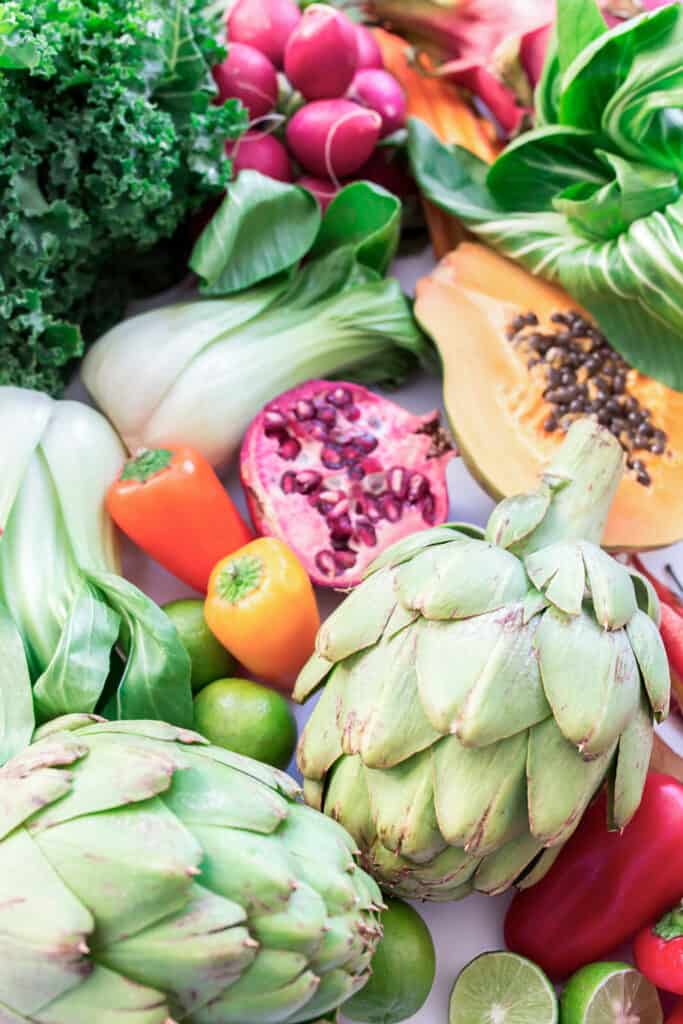Are you considering transitioning to a vegan lifestyle but feel overwhelmed by the thought of making such a significant change? I went vegan about eight years ago, in a bit of a chaotic way. If you want a bit of a smoother ride, the SMART goal-setting system could be your guiding light on this transformative journey.
SMART stands for Specific, Measurable, Achievable, Relevant, and Time-bound, and it’s a commonly used approach to help set clear objectives and reach desired outcomes. It can be used when transitioning to a vegan lifestyle, especially for beginners.

HOT OFF THE PRESS:
In this blog post, I’ll break down the SMART system and apply it to your transition to veganism, making the process more manageable and rewarding.

Specific: define your vegan path
The first step to going vegan is to establish a clear and specific goal. This kind of ties in with the Relevant section, but ask yourself why you’re embarking on this journey and what you want to achieve. Whether it’s reducing animal cruelty, lowering your carbon footprint, or improving your well-being, a specific goal will keep you motivated and focused.
Because despite what some people may say, in our current world (where everything from tyres to phone screens are made with animal products) it’s not actually possible to be 100% vegan. Here’s the definition of veganism:
Veganism is a philosophy and way of living which seeks to exclude—as far as is possible and practicable—all forms of exploitation of, and cruelty to, animals for food, clothing or any other purpose; and by extension, promotes the development and use of animal-free alternatives for the benefit of animals, humans and the environment. In dietary terms it denotes the practice of dispensing with all products derived wholly or partly from animals.
The Vegan society (bolding by me)
Once you’ve established your “why” with the Relevant step, come back here and decide whether you’re going to “just” transition your diet or if you’re also going to embark on a vegan journey in other parts of your life, like the clothes you wear or what you have in your home.
I have plenty of resources on vegan fashion, home and travel, for example Where to find vegan furniture in the UK (and beyond!) and Vegan clothing materials: your quick guide.
If you’re not sure, my advice would be to start with food as that’s the most straightforward (and best labelled) and then move to clothes and other parts of your life.
Measurable: track your progress
A crucial aspect of the SMART system is being able to track your progress. Set measurable goals that allow you to monitor your achievements. For instance, you could:
- commit to consuming at least five servings of fruits and vegetables a day or
- replace two non-vegan meals each week with plant-based alternatives or
- choose a type of meal (e.g. breakfast) to “veganise” and move onto the other meals once you’re confortable making a few vegan recipes for that meal.
If you’re going for option 1 (and even if you’re not!), I highly recommend the free Daily Dozen app as a way of tracking your intake of plant-based wholefoods. If you’re concerned about veganism being too restrictive, this is a great way to go. Essentially, you focus on adding more plant-foods and they’ll eventually crowd out the animal products, without feeling like you’re restricting. Using the app will also help you in “what the heck do I eat now?” moments.
Measuring your progress will help you stay accountable and motivated as you witness the positive changes you’re making.
Achievable: start with manageable steps
Transitioning to a vegan lifestyle might seem daunting at first, but breaking it down into achievable steps makes the process more realistic. Begin by learning about veganism, exploring plant-based recipes, and gradually phasing out animal products from your diet.
You could start by eliminating one animal product at a time, such as dairy or eggs, until you feel comfortable making a complete switch. I’ve written more about that approach here: The baby steps guide to going vegan & plant-based.
If you’re using the “crowding out” approach with the Daily Dozen app, you could commit to a daily score and increase it over time. Make sure you’re start small and don’t expect perfection from yourself – I rarely tick off all of my servings and I’ve been doing this for years!
Setting achievable goals ensures you don’t become overwhelmed and increases your chances of long-term success.
Relevant: align with your values
When setting goals, it’s essential that they align with your values and priorities. Going vegan is not just a diet change; it’s a lifestyle shift. So ensure your goals resonate with your core values: what does “vegan” mean to you? Is it about animal welfare, environmental sustainability, or personal health? Take a few minutes to define your “why”, your reasons for going vegan, maybe even writing them down.
If you’re not sure, here are a few films you can watch to help you decide what is most compelling:
- Game Changers and Forks Over Knives – health
- Cowspiracy – environment
- Earthlings – animal welfare (I’ll admit that I haven’t watched this one as people say it can be quite traumatising. You’ve been warned!).
When your goals are relevant to your values, you’re more likely to remain committed and dedicated. So go ahead and follow people who share similar values on YouTube or Instagram for regular reminders of why you embarked on this vegan journey. You can start with the social accounts of the films above and take it from there.
Time-bound: set a timeline
Setting a timeline for your vegan transition creates a sense of urgency and prevents procrastination. I don’t necessarily think you should decide on a specific date when you plan to have fully transitioned to a vegan lifestyle however. As I mentioned earlier, it’s difficult to be 100% vegan in the world we live in currently.
What I’d recommend instead is a time-bound challenge, for example for a month you could:
- abstain from eating meat / fish or
- have only vegan breakfasts (make sure to plan them the night before to avoid being hangry in the morning!) or
- aim to score 12/24 on the Daily Dozen app every day.
A time-bound goal provides structure to your journey and helps you stay on track, without feeling trapped or too restricted, as it’s only for a short while.
It’s also a great stepping stone to being “more vegan” as time goes by. If you follow the rule you set yourself for a month, I can guarantee you’ll learn something which will inform your journey going forward.
So be decisive, write your challenge down and get started!
This post was all about going vegan for beginners
Embracing a vegan lifestyle is a meaningful and impactful decision, and like all major diet or lifestyle changes, it requires careful planning and some level of commitment. By applying the SMART goal setting system, you can navigate this transition successfully and with confidence.
Remember, despite what a few angry people say online, there is no such thing as a “perfect” vegan journey. As you embark on this path, you’ll not only experience personal growth and positive changes but also contribute to a more compassionate and sustainable world. So, take that first step, set your SMART goals, and savour the rewards of your conscious choices. Your journey to veganism starts now!
You may also like:



![Only a month late... Here are our Valentine's Day photos! 👩🏼❤️💋👨🏻😅
We've been on a bit of a Caribbean kick (say that 10 times!) since watching the One Love film about Bob Marley on Valentine's Day + @gazoakley's adventures in Jamaica on the YouTubezz. 🇯🇲
So far we've eaten at @turtlebayuk [apologies for the blurry photos, I took them before getting my new @fairphone!] and ordered from Pappy's Afro Caribbean Takeaway (don't think they're on Instagram)... Next step is to make it at home; any recipe recommendations? 😘
#PlantBased #JamaicanFood #CaribbeanFood #OneLove](https://jessicagoodenough.com/wp-content/plugins/instagram-feed/img/placeholder.png)
Leave a Reply
You must be logged in to post a comment.